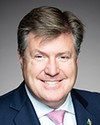Thank you to the witnesses for attending our session today.
A number of my colleagues on the panel have already addressed this issue of representation, at least partially, and whether or not a person is still represented by someone who perhaps they didn't vote for.
Members of Parliament have every incentive to represent their constituents as best they can, presumably in order to win over those who didn't vote for them in the previous election. Certainly, we do it through our office activity in representing case work.
There are other ways that a member can do so, by raising issues on behalf of constituents that are important to constituents in caucus, through statements made in the House, and by influencing debate.
I'd like to talk about urbanization, and what that means to riding size in rural locations. We heard a little bit about this, and I'd like the Honourable John Duncan to tell us about this as a person who represented a large riding for so many years.
The way the redistribution of seats typically works is that the relative size of a riding by population doesn't change over time. We add seats to account for population growth. But urbanization, which has been under way for decades and still continues to be a factor, means that rural ridings just continue to grow.
What we've heard from a variety of witnesses, from the first nations community leaders that we met with this morning in Elizabeth May's riding, as well from the people we heard from in Yukon yesterday, sounded to many of us like a desire for proportional representation everywhere except in their ridings, so that we don't actually shrink or dilute their own representation on a local level.
I'd like you to tell us a little more about how urbanization is already a pressure on these larger ridings.




